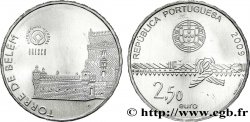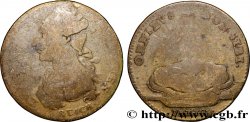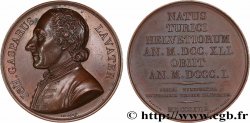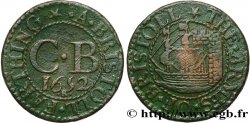E-auction 327-243487 - fjt_518887 - AUVERGNE, JETONS ET MÉDAILLES Héros populaire “Lustucru” 1660
Usted debe firmar y ser un comprador aprobado para pujar, Inicia sesión para pujar. Las cuentas están sujetas a la aprobación y el proceso de aprobación se alcanzan dentro de las 48 horas. No espere hasta el día en una venta se cierra el registro.Al hacer una oferta en este artículo usted está firmando un contrato jurídicamente vinculante para comprar este artículo y haga clic en «oferta» constituye una aceptación de los términos de uso de e-auctions de cgb.fr.
La subasta debe ser colocado en euros enteros cantidades venta only.The se cerrará en el momento en la descripción del artículo, no se ejecutarán las ofertas recibidas en el sitio después de la hora de cierre. Veces Transmition pueden variar y las ofertas pueden ser rechazadas si espera a los últimos segundos. Para más información envie el FAQ.
SIN GASTOS PARA LOS COMPRADORES.
SIN GASTOS PARA LOS COMPRADORES.
| Valoración : | 30 € |
| Precio : | 11 € |
| Oferta más alta : | 12 € |
| Fecha de fin de la venta : | 22 julio 2019 18:00:00 |
| participantes : | 5 participantes |
Tipo : Héros populaire “Lustucru”
Fecha: 1660
Metal: cobre
Diámetro: 25,5 mm
Eje de acuñación: 6 h.
Peso: 4,40 g.
Canto: lisse
Comentarios sobre el estado de conservación:
Usure régulière sur les reliefs. La dorure reste bien présente au droit
N° en los catálogos de referencia :
F.9608 a - Cahiers numismatiques 139, mars 1999
Anverso
Titulatura del anverso: OMN - E. FERE - NS. MALVM..
Descripción del anverso: Un singe accroupi sur un âne allant à gauche. D'une des boîtes sortent trois têtes de femmes.
Traducción del anverso: (Il porte tout le mal).
Reverso
Titulatura del reverso: .VNICVS- . EST. - SPECIE..
Descripción del reverso: Deux forgerons redressent une tête de femme ; à l'exergue : 1660.
Traducción del reverso: (Un seul a cette apparence).
Comentario
Cet exemplaire a été anciennement doré. Donné à Saint-Flour dans Feuardent mais aussi à Bourges ou Meaux. En fait, jeton de “Lustucru” ou “l’Eusse-tu-cru”. Ce jeton reprend l’illustration d’un almanach fait à la suite de “l’affaire de Langey” rapportée dans les Historiettes de Tallement des Réaux. M. de Langey, noble protestant sans enfant est condamné au Congrès en 1659 pour constater son impuissance sexuelle. Si celle-ci est établie, son épouse sera autorisée à requérir le divorce. L’affaire fait grand bruit et un auteur anonyme crée un almanach satirique, perdu, qui montrait un forgeron qualifié de “médecin céphalique” ou de “l’Eusse-tu-cru” qui redresse une tête de femme avec son marteau, signifiant par là que l’on ne croyait pas que l’on pouvait redresser la tête d’une femme ! En 1662, une jacquerie dans le Boulonnais est qualifiée de “guerre de Lustucru” pour souligner le côté vain de l’émeute. Enfin, la “chanson de la mère Michelle”, de son chat et du père Lustucru rappelle encore une fois cette historiette.
This example was formerly gilded. Given to Saint-Flour in Feuardent but also to Bourges or Meaux. In fact, a token of “Lustucru” or “l'Eusse-tu-cru”. This token uses the illustration of an almanac made following the “Langey affair” reported in the Historiettes de Tallement des Réaux. Mr. de Langey, a childless Protestant nobleman, was condemned to Congress in 1659 to establish his sexual impotence. If this was established, his wife would be authorized to request a divorce. The affair caused a great stir and an anonymous author created a satirical almanac, lost, which showed a blacksmith described as a “cephalic doctor” or “l'Eusse-tu-cru” who straightened a woman's head with his hammer, meaning by this that it was not believed that a woman's head could be straightened! In 1662, a peasant revolt in Boulonnais was called the “Lustucru War” to highlight the futility of the riot. Finally, the “song of Mother Michelle,” her cat, and Father Lustucru once again recalls this story.
This example was formerly gilded. Given to Saint-Flour in Feuardent but also to Bourges or Meaux. In fact, a token of “Lustucru” or “l'Eusse-tu-cru”. This token uses the illustration of an almanac made following the “Langey affair” reported in the Historiettes de Tallement des Réaux. Mr. de Langey, a childless Protestant nobleman, was condemned to Congress in 1659 to establish his sexual impotence. If this was established, his wife would be authorized to request a divorce. The affair caused a great stir and an anonymous author created a satirical almanac, lost, which showed a blacksmith described as a “cephalic doctor” or “l'Eusse-tu-cru” who straightened a woman's head with his hammer, meaning by this that it was not believed that a woman's head could be straightened! In 1662, a peasant revolt in Boulonnais was called the “Lustucru War” to highlight the futility of the riot. Finally, the “song of Mother Michelle,” her cat, and Father Lustucru once again recalls this story.








 Informar de un error
Informar de un error Imprimir la página
Imprimir la página Comparte mi selección
Comparte mi selección Haz una pregunta
Haz una pregunta Consignar / vender
Consignar / vender










